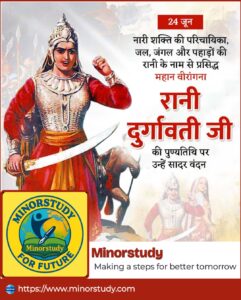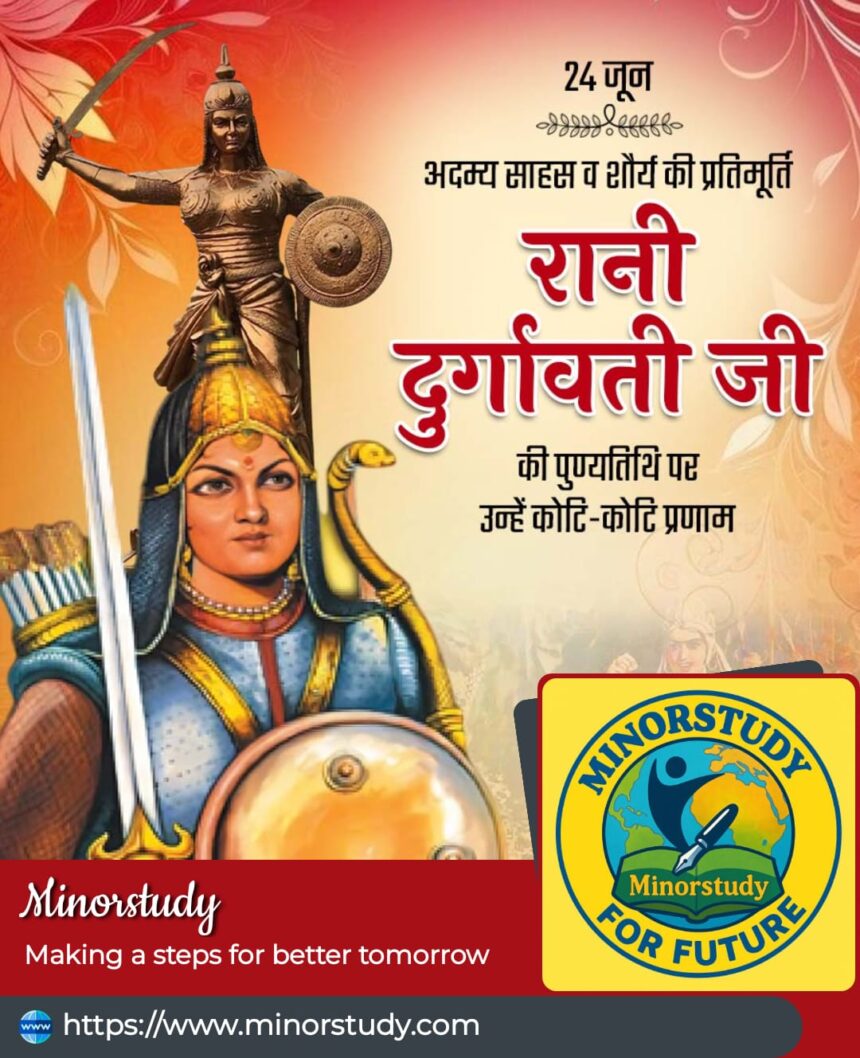Discover the fearless legacy of Rani Durgavati Ji – the warrior queen who defied the Mughals, ruled with wisdom, and laid down her life in battle. Her story remains an inspiration for modern India.
👑 Introduction: Who Was Rani Durgavati Ji?
Rani Durgavati Ji (1524 – 1564 CE) was a valiant and visionary queen of the Gondwana Kingdom, known for her exceptional bravery, administrative wisdom, and ultimate sacrifice against the Mughal invasion. She is remembered as one of the few female warrior monarchs in Indian history who chose death over dishonor.
Even after more than 450 years, her courage and leadership continue to ignite the spirit of nationalism and women empowerment. She was not just a ruler — she was a symbol of strength, resilience, and self-determination.
📖 History: Early Life and Rise to Power
Birth: October 5, 1524
Birthplace: Kalinjar (present-day Banda district, Uttar Pradesh)
Father: Raja Keerat Rai, a Chandela Rajput ruler of Mahoba
Education: Trained in horse-riding, swordsmanship, archery, and statecraft
Marriage: Rani Durgavati was married to Dalpat Shah, son of Gond King Sangram Shah of Garha-Mandla (Madhya Pradesh)
Her early exposure to Rajput valor and discipline shaped her into a warrior princess. Upon Dalpat Shah’s untimely death in 1548, Rani Durgavati assumed regency on behalf of her young son Veer Narayan, and governed with grace and strength.
🛡️ Timeline of Rani Durgavati Ji’s Life
| Year | Event |
|---|---|
| 1524 | Born into the Chandela dynasty at Kalinjar |
| 1542 | Married Dalpat Shah of the Gond dynasty |
| 1548 | Husband’s death; takes over the throne as regent |
| 1550s | Successfully repels several attacks from neighboring states |
| 1564 | Attacked by Mughal General Asaf Khan under Akbar’s orders |
| June 24, 1564 | Fights heroically and commits martyrdom to avoid capture |
💎 7 Heroic Facts About Rani Durgavati Ji
Fought till her last breath to protect her kingdom from the mighty Mughal Empire.
Committed suicide with her own dagger rather than surrender to the enemy.
Managed state affairs brilliantly—from economy to justice to defense.
Promoted agriculture and trade across her kingdom.
Built reservoirs, temples, and infrastructure that improved daily life for her people.
Her army included both Rajput and Gond warriors, promoting unity.
A rare combination of warrior spirit and maternal governance.

🏞️ Significance in Indian History
Rani Durgavati is not only a Gond queen but a national heroine. Her sacrifice is often compared with legendary warriors like Rani Lakshmi Bai of Jhansi. Her story teaches us:
Dignity over defeat
Unity in diversity (Hindu-Gond alliance)
Women can lead even in the harshest battles
Legacy matters more than lifespan
🕊️ Observance & Tributes
Rani Durgavati Balidan Diwas is observed every June 24th in Madhya Pradesh, Uttar Pradesh, and tribal regions.
Rani Durgavati Vishwavidyalaya in Jabalpur is named in her honor.
Her statues and commemorations are present in various parts of India.
Schools, colleges, and state functions pay tributes through cultural programs and parades.
🌟 Wishing and Honoring Rani Durgavati Ji
🪔 “Salutations to Rani Durgavati Ji — the brave soul who chose martyrdom over submission!”
🪔 “May her fearless legacy continue to inspire the youth and empower every woman of Bharat.”
🪔 “On this day, we bow to the valiant queen whose life was a saga of courage and dignity.”
❓ FAQs About Rani Durgavati Ji
Q1. Why is Rani Durgavati famous?
She is known for resisting the Mughals fiercely and choosing death over capture, becoming a martyr for Indian pride.
Q2. Was she a Rajput or a Gond?
She was born a Chandela Rajput and married into the Gond dynasty, thereby uniting two rich heritages.
Q3. What happened during the Mughal attack?
In 1564, Mughal general Asaf Khan attacked her kingdom. After days of battle, facing inevitable defeat, she ended her life with her dagger.
Q4. Are there places named after her?
Yes. Rani Durgavati University, Rani Durgavati Museum, and various schools, roads, and parks are named after her.
Q5. How is she relevant to today’s generation?
Her bravery, leadership, and moral strength make her an icon of women empowerment, patriotism, and governance.
📌 Important Lessons from Her Life
Stand for your people, even if it costs your life
Justice and dignity must never be compromised
Empowerment doesn’t come from position but from action
Women are equally capable of ruling, fighting, and deciding fate
Legacy is not built in years but in defining moments
💥 Her Relevance in Daily Life
Rani Durgavati Ji is part of school and college curricula, ensuring students know of her heroism.
She is often quoted in women empowerment campaigns, especially in tribal and rural India.
Her legacy is invoked in leadership training and motivational platforms.
She symbolizes tribal pride and national integration, connecting ancient wisdom with modern patriotism.
Her story is a reminder that honor and sacrifice still hold value, even in today’s complex world.
🧠 Human-Friendly Reflection
Rani Durgavati was not just a queen in armor. She was a mother, a strategist, a ruler, and above all — a soul with undying love for her people. Her courage wasn’t loud, but loud enough to echo through centuries.
She proves that leadership is not about gender or background, but about principles, actions, and service. Whether you’re a student, teacher, parent, soldier, or leader — her story gives you strength to stand tall in your own battlefield.
✅ Conclusion: Why We Must Remember Her
Rani Durgavati Ji’s life reminds us that greatness comes not from power, but from purpose. In an age where convenience often overpowers conviction, she teaches us the price of dignity and the value of sacrifice.
She is a national treasure whose story must be retold, revered, and remembered — not only in history books but also in our hearts and actions.








